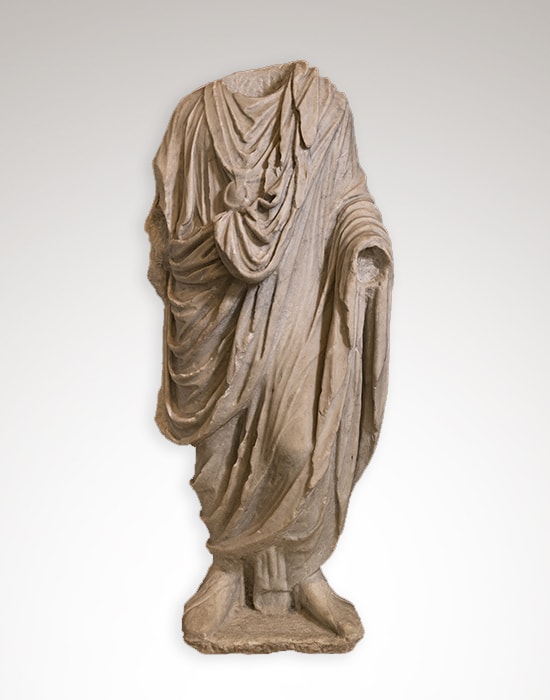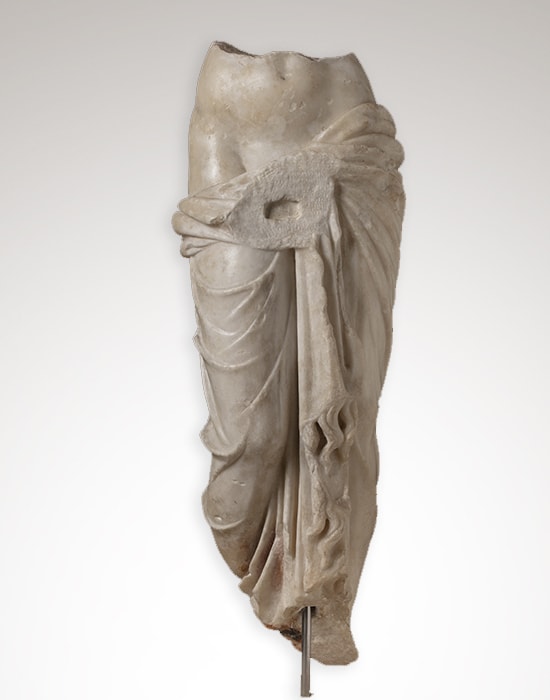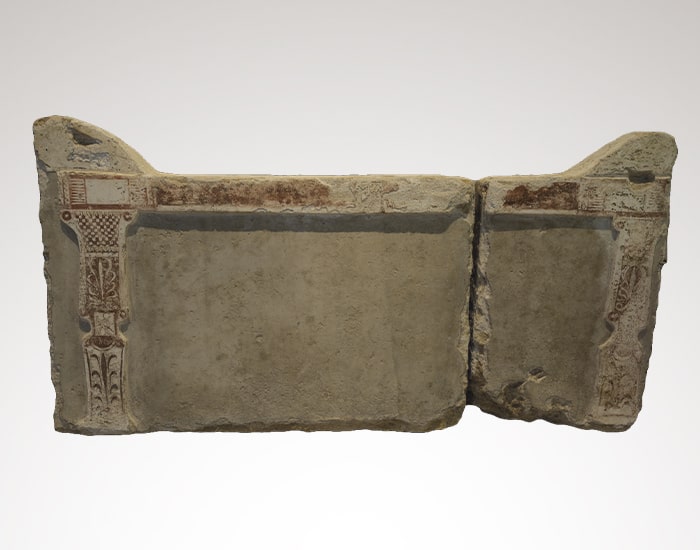Taranto after being conquered by the Romans
ITINERARIES AND COLLECTIONS
The Roman city - public spaces
Signs of the institutional presence of Rome can be seen in the city of Taranto only starting from the municipium period, while in the religious sphere some scattered elements testify to the construction of places of worship as early as the colonization period. The most important find is the Sacellum stored in the garden of the Military Hospital.
In 37 B.C. Taranto was the site of the meeting between Octavian and Mark Antony and before that, in 43 B.C., Octavian had been elected patron of the city. It is precisely during that period that a great many epigraphic documents were produced in relation to the rehabilitation of religious and public buildings. The largest thermal baths of the city, called the “Pentascinenses Baths” were built in the south-eastern area of the urban centre at the beginning of the 2nd century A.D.
Excavations of the Baths in the late nineteenth and early twentieth century brought to light precious mosaic floors and some mid-imperial decorative sculptures, including the base of a statue with an inscription identifying in Greek the young Taras, the mythical son of Poseidon / Neptunus and hero who founded the Greek city.
Marble statue of a young man wearing a toga, 1st Century AD

The Roman city - private spaces
The housing space of the city, which remained substantially unchanged over the centuries, underwent some slight remodulation especially following the Roman conquest and in particular after the foundation of the colony called Neptunia in 123-122 B.C. The settlers, probably of Latin ethnos, settled in the area on the margins of the ancient Greek settlement and in direct contact with the burial grounds of the Hellenistic period. While there is little archaeological evidence of the earlier settlement dating back to the end of the 2nd century B.C., documentation about the settlement at the time of the Tarentum municipium and of the imperial age is more abundant. This was the time period when the population density was highest, particularly in the areas adjacent to public spaces, such as the forum.
At the same time, residences of great prestige and luxury were built along the coast of the Mar Piccolo throughout the imperial age; these can be considered to be real urban villas that enjoyed the splendid view afforded by the Santa Lucia headland.
Decorations of the domus.
Most of the finds of the domus and settlement areas of the Roman period were made at the turn of the late nineteenth and early twentieth centuries, in a political and social context that was not conducive to ensuring full protection to archaeological heritage. Therefore, in order to safeguard the most important decorative elements, it was decided that the smaller items be collected and transferred to the new Museum, while the mosaic floors were removed from where they were found. For these reasons, inside the National Archaeological Museum there is a splendid gallery of tessellated tile floors, sculptural decorations and fresco and stucco plasters, which often lack the original context to which they belonged.
Among these, the three floors decorated with coloured glass-paste tiles unearthed at the Maria Immacolata Institute undoubtedly stand out; they are attributable to the triclinium overlooking the peristyle garden of a large urban domus that can be dated between the late 2nd and first half of the 3rd century A.D.
Marble statue of Venus, 1st Century B.C.

From Neptunia to Tarentum: the Roman necropolis
In 209 B.C. Quintus Fabius Maximus conquered Taranto, destroying its walls and plundering the city.
The Roman conquest of the city led to the downsizing of the urban centre and the same happened in the funerary sphere. Between the end of the 3rd and the 1st century B.C., the tombs were partly built over the larger archaic-Hellenistic necropolis and appeared to be concentrated in the areas immediately adjacent to the town, where also monumental chamber tombs from this time period are found. From the end of the 2nd century B.C. the burials, marked by various signs, by marble or carparo tombstones with inscriptions bearing the name of the deceased or the gens they belonged to or, again, by marble or stone slabs whose upper part consisted of a head portrait, were characterized by the incineration rite and were distributed mainly in the area facing the shores of the Mar Piccolo. Among the most significant finds is the Roman necropolis in the Piazza d’Armi area, whose excavation began in April 1901.
Funerary bed (kline) in Carparo stone, second half of the 2nd Century B.C.






